Over the past few months, you’ve noticed something unsettling.
Employees who once jumped at the chance to take on a new project no longer volunteer during meetings.
Star players who once arrived at the office an hour early and left late - by choice! - are now clocking-out right at five.
Overall, your staff isn’t bringing the same energy they once had for the job.
It goes without saying that this isn’t a good sign. Engaged employees are fully committed to the growth of their company.
They share ideas, reach out to colleagues to collaborate on projects, and go the extra mile to turn a good deliverable into a great one.
On the other hand, disengaged employees practice what’s known as presenteeism. They show up, do their job, and go home.
They’re not bad employees, but they’ve made the decision not to care too much about their work.
For a high growth company, this can be devastating.
So, how can you inject some energy into your team? You can start by taking these steps to boost employee morale and increase job satisfaction.
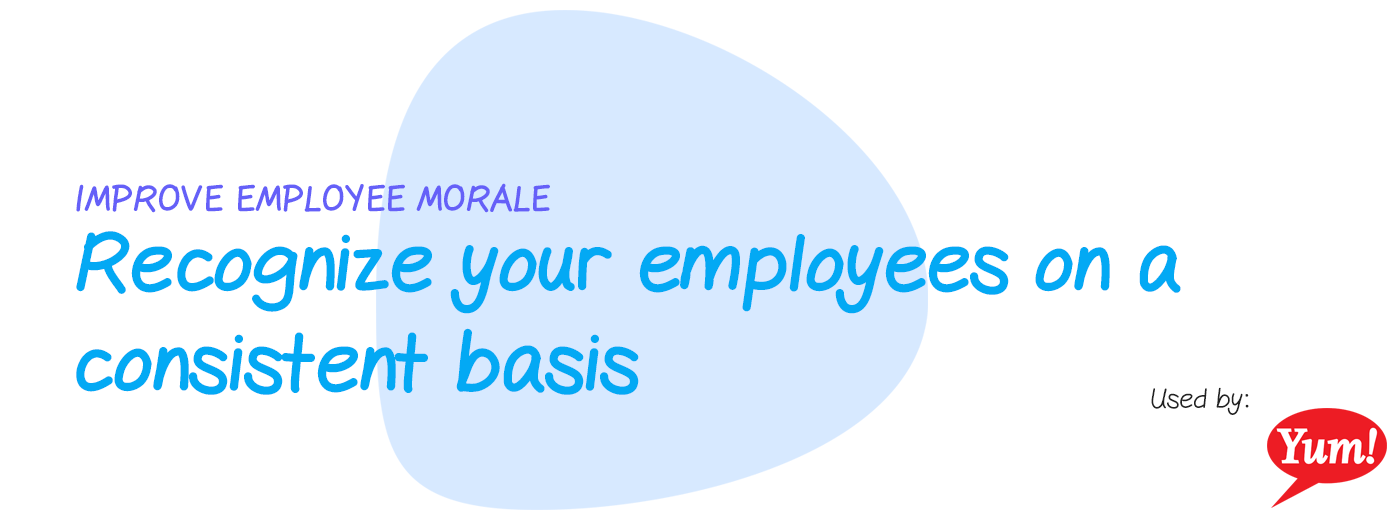
Recognize your employees on a consistent basis
Recognizing your employees is one of the most effective ways to boost employee morale.
One study found that 82% of employees don’t feel like they’re recognized enough at work.
What’s even more interesting is that 40% of respondents said they’d put in more effort if their contributions were better acknowledged.
Pay is important, but it’s not everything, especially past a certain threshold. And if your company employs in-demand talent, they’ll already be paid at or beyond this ceiling.
So it’s important to think about what other factors will keep them happy in the job and keep them performing at their highest potential.
What are the top companies doing to create a “recognition culture” across their organization?
Yum! Brands worked on building a strong recognition culture across the entire organization. And since their organization spanned 125 countries, it was important that this recognition culture be cross-culturally relevant.
The first big step the company took was talking to their employees, regardless of status or seniority.
Rather than only soliciting opinions from direct reports, they’d ask frontline employees and other staff for their opinions about specific operations.
They would also share as much information as possible with their employees, to foster a sense of transparency and shared accountability.
When employees receive the right information, it shows that their company cares about their opinion which in turn makes them care about that company.
And once employees care, their commitment to the company extends beyond doing the bare minimum. They go the extra mile because they know their efforts will be rewarded.
Once you’ve got your employees convinced that their contributions matter, be sure to recognize their contributions. For example, Yum! Brands focused on celebrating “first downs, not just touchdowns”.
Also, try to make your recognition as personalized as possible. One study found that over three-quarters of employees hang on to handwritten thank you notes.
What’s more, they focused on making things timely. Instead of waiting for annual reviews to recognize employees, they recognize employees in the moment.
How can you build a recognition culture within your organization?
How can you build a recognition culture within your organization and improve employee morale?
- Be transparent with your employees and share information about goals and objectives so they know where to focus their efforts
- Assign more responsibility to employees to demonstrate trust and recognition of their ability to successfully meet objectives
- Encourage managers to get to know employees and their motivations
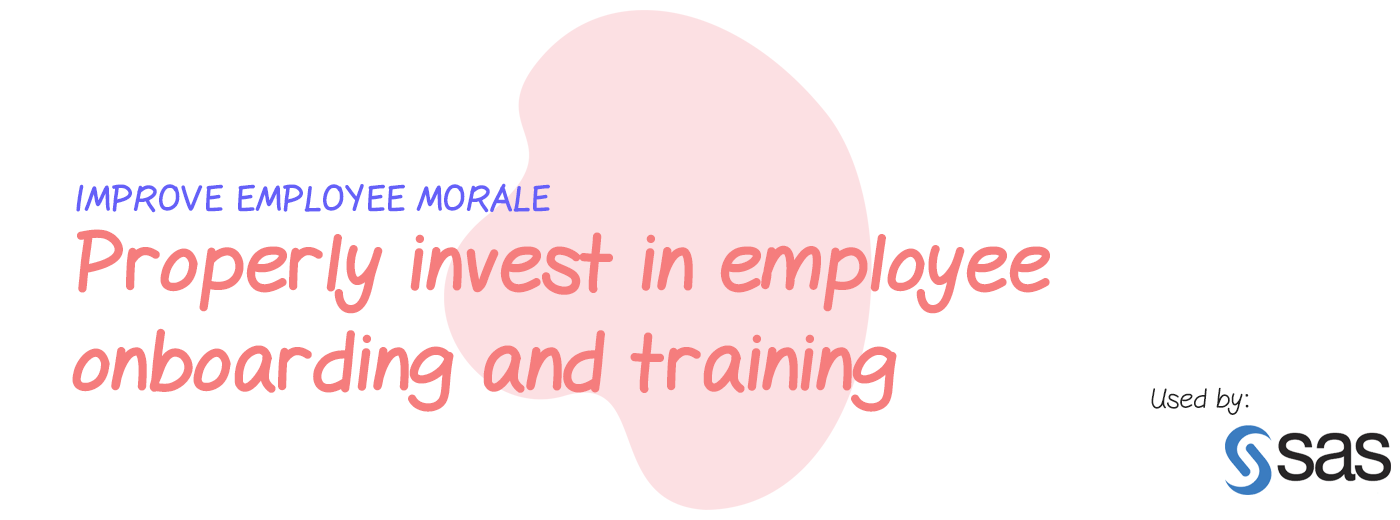
Properly invest in employee onboarding and training
It’s no secret that positive employee morale is tied to an employee’s overall job satisfaction.
If an employee wants to feel satisfied in their work, they need to know how to do their job well.
This is why designing a strong employee training program is part of the employee morale equation. If your employees feel well prepared and properly equipped to do their job, then they can do it to the best of their ability.
Plus, properly trained employees understand how their work ties into the organization’s larger objectives, how to do their job properly, and how to work efficiently.
There are specific points in the employee journey when effective training is critical to employee morale:
- At the onboarding stage: Capitalize on a new employee’s enthusiasm for the job with a proper introduction to the business. The first few weeks is when an employee decides whether they want to stay in the role or look elsewhere. Resist the temptation to rush the process, so employees can get to work.
- When new technology is introduced: New technology introduces efficiencies, but when it isn’t introduced properly, it can create tension. Train employees thoroughly on new technology.
What are the top companies offering in terms of internal training opportunities?
The best companies invest in effective employee training opportunities, not just at the onboarding stage but beyond as well.
For instance, Amazon runs a month-long training and leadership program for new employees. It also prepays tuition for employees who want to pursue additional studies in in-demand fields.
SAS, the business analytics software company, provides in-class and on-the-job training for new graduates so they’re thoroughly prepared before starting a full-time role. Plus, they offer additional training opportunities and career mentoring.
As one of the company’s senior communications specialist notes, “Knowledge workers never want to be stagnant. So SAS provides opportunities for growth to keep our employees challenged, motivated, and engaged.”
How can you create an effective internal training program?
You want to create an internal training program that is valuable to your employees. Providing access to an online module with irrelevant training materials isn’t enough to boost employee morale.
If you want a morale-boosting training program, you’ll need to think about what sorts of development opportunities feed the need for new challenges.
- Conduct a needs assessment: What skills does your organization value? A great internal training program should put employees in a position to obtain greater responsibilities and potential promotions. Create educational opportunities that develop the skills your company actually needs.
- Keep Adult Learning Best Practice In Mind: Remember that adults tend to be self-directed learners who want sessions to be relevant to their needs. They also bring their own prior training and life experiences, so teachers should be aware of this.
- Figure Out What Format Your Workers Prefer: Do your employees prefer online learning or in-class session? It’s worth consulting with workers beforehand to find the most convenient format. Don’t assume everyone wants online sessions. There may be an appetite for classroom training.
- Consider Offering a Tuition Allowance: It may be more cost-effective to offer a tuition allowance, so employees can pursue the qualifications they want externally. In this way, employees who want development opportunities have the company’s support and the company doesn’t need to organize its own in-house programs.
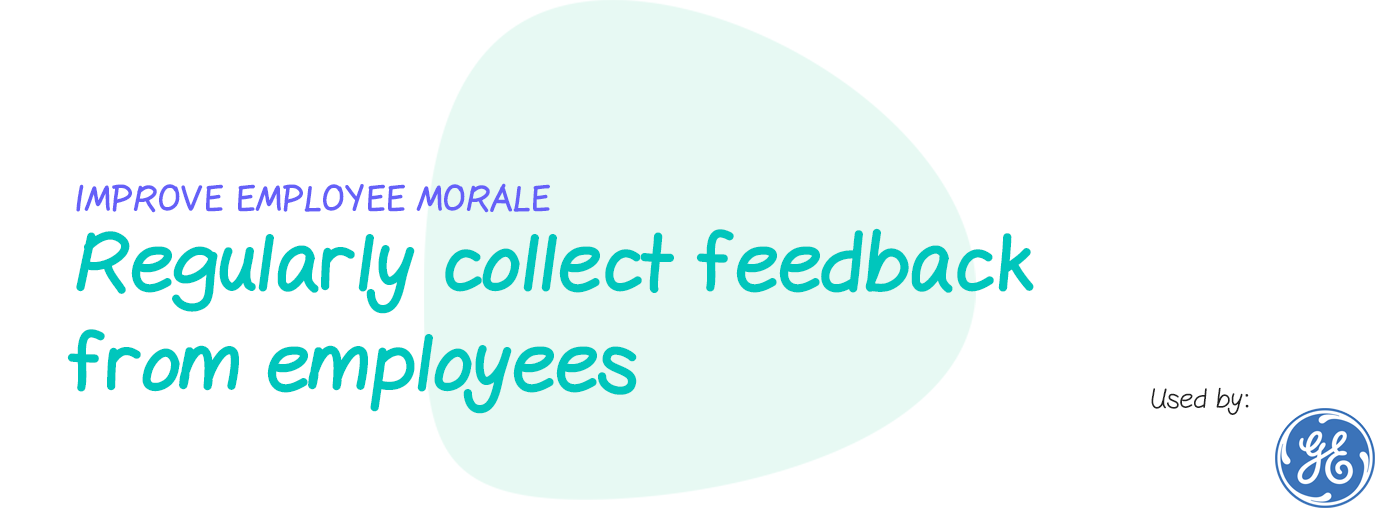
Regularly collect feedback from employees
The annual employee engagement survey is one of HR’s favorite tools.
It’s also one of the most roundly mocked workplace activities.
In fact, the average employee survey response rate sits at about 30 to 40%.
One study conducted by Aon Hewitt found that only one-fifth of workers believe their responses will result in any action from their employer.
And even if a large number of employees participate in the survey, there’s no direct correlation between high response rates and high employee engagement.
For instance, pressure from line managers - who must meet a certain quota of completed surveys on their team - may prompt employees to quickly complete the survey.
In turn, those employees may just check boxes without actually reading the questions.
Why don’t employees complete employee surveys?
Oftentimes, it’s because they think nothing will come of the results. The entire survey feels like a charade that won’t lead to meaningful change.
Sparkbay allows us to get honest employee feedback. The insights we get around employee engagement enable us to be more proactive and fuel quality conversations.
How Exegy® used a data-driven approach to improve engagement with Sparkbay
How are the top companies soliciting feedback from their employees?
Some companies have introduced more frequent pulse surveys.
At most companies, these pulse surveys don’t replace employee surveys. Instead, they provide real-time information on how employees feel that can help with survey results in context.
For instance, at one communications firm employees receive questions one at a time that pop up on their screen several times per week.
The questions are quick temperature checks - “Do you feel that your manager listens to you?” - that give the company a sense of how employees are feeling at the moment.
Plus, these questions can ask about anything, like how employees feel about their new office chairs.
They can also be explicitly used to boost employee morale by asking non-work related questions. For example, a pop-up question may ask workers to pick between two famous pop stars or describe a funny childhood incident like a bad haircut.
The goal is to create a sense of camaraderie and boost employee morale.
GE, which started the traditional performance management many companies are redesigning, now believes “Fast Feedback” is the key to its future
How can you obtain more useful employee feedback?
The key to effective employee feedback is sincerity. If decision-makers don’t demonstrate that employee feedback will lead to change, then they won’t take requests for employee feedback seriously.
Here are a few ways your company can obtain more useful feedback - and improve employee satisfaction in the process.
- Schedule employee roundtables with executives: Organize opportunities for your employees to sit down with VPs, Directors, and other senior employees and discuss their thoughts about the company. Of course, these sessions should not be an annual affair, but rather scheduled throughout the year.
- Create “office hours” where employees can schedule time with an HR leader: Create an opportunity for dialogue with senior HR leaders by giving employees a chance to schedule meetings throughout the year for open discussions about the company culture and more.
- Schedule events with presence from senior leaders: Whether it’s a free breakfast, a company initiative for charity, or a sports event, encourage senior leaders to engage with employees and find out how they feel about their jobs in a casual yet professional environment.
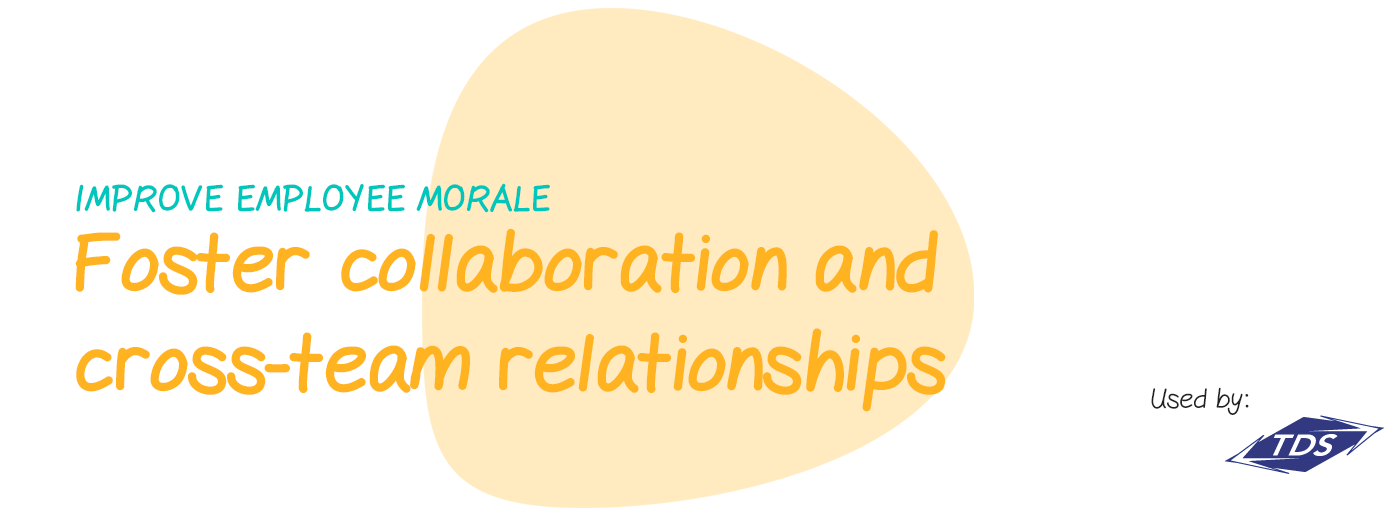
Encourage employees to collaborate and form connections across teams
Professional friendships and associations boost employee morale. Research shows that people are happier when they have “work friends”.
They also thrive. in one Gallup poll, respondents who said they “strongly agree” that they have a best friend at work were:
- 37% more likely to say they had someone at work encouraging their professional development
- 28% more likely to say that someone at work talked to them about their career progression in the past 6 months
- 27% more likely to report that their opinions at work matter
Camaraderie within an organization creates a sense of community and having a support system. Great organizations do this by fostering a collaborative environment where ideas from various parts of the business are valued and employees feel a sense of shared pride in the company’s work.
What are the top companies doing to foster collaboration and cross-team relationships?
TDS Telecom provides telecommunications services in 31 states and employs over 2,800 people.
They offer remote working opportunities to their employees. About 14% of the company’s workforce works from home.
Nevertheless, the company has still created the infrastructure to ensure employees forge connections and never become isolated.
They’ve introduced technology platforms specifically designed to help employees stay connected and communicate with each other.
Employees can share their interests and find others within the organization who play the same instrument or enjoy a similar hobby.
These tools are also meant to help employees collaborate with each other, share best practices, and find creative solutions to problems.
For instance, an employee in the field can share a photo of a damaged piece of equipment and solicit advice from other workers across the country to quickly receive an expert opinion on how to approach the problem.
This kind of network also gives service reps the real-time information they need to do their job effectively, which is to inform and advise customers.
Similarly, Nokia has programmed collaboration into their onboarding program.
When a new employee starts, they’re encouraged to introduced to six members of their team.
They’re also expected to have a proper introductory meeting where they have an in-depth conversation about the colleague’s background and competencies.
And to encourage cross-team collaboration, they’re introduced to six people outside their team and expected to do the same.
How can you encourage collaboration and relationship building within your organization?
There are a few ways your organization can build a collaborative culture.
- Encourage collaboration at the onboarding stage: New employees are highly sensitive to the company culture in the first few weeks on the job, so design an onboarding program that emphasizes the collaborative culture you want to build, like Nokia does.
- Introduce employees to people outside their team: Cross-functional collaboration breeds innovation, so get a head start by facilitating introductions between members of your team and members of other teams.
- Consider introducing internal social media networks: Well-designed internal social networks encourage employees to share their interests and meet people from across the organization, allowing them to cultivate a supportive network within the company.
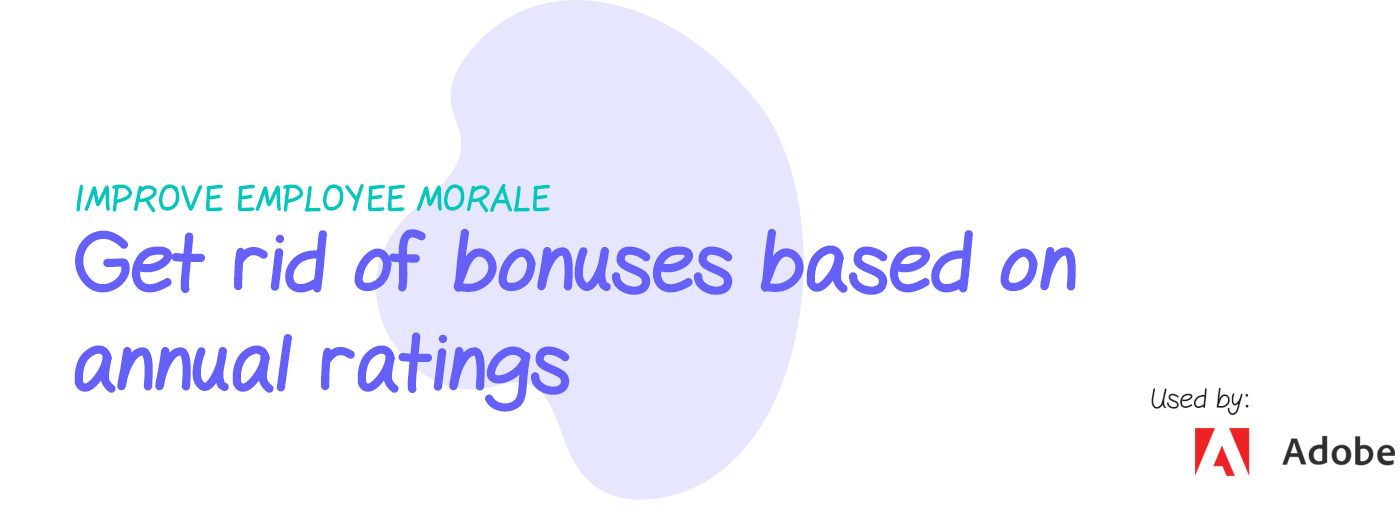
Get rid of bonuses based on annual ratings - with one big exception
This may seem counter-intuitive, but bear with us.
For many companies, compensation reviews and individual performance evaluations are tightly weaved together.
At the end of the year, an employee sits down with their manager who uses a scorecard or other ratings system to figure out whether they met expectations, underperformed, or overperformed.
If they met expectations, great! They receive a salary in line with market rates.
If they underperformed, they get a salary below market rate.
And if they overperformed, they get a salary that exceeds market rate.
But this may not be the best approach.
After all, the entire idea of using metrics and scorecards comes from an old world of work where it was all about producing a specific number of units each day.
Today’s top companies are in the business of generating original ideas and collaborating to solve thorny problems. Not manufacturing products.
With this out-of-date system, employees spend an unnecessary amount of time tracking KPIs that may not even matter - oftentimes, there are KPIs that only account for 5% of an employee’s performance rating.
And as McKinsey points out, these traditional systems rely on determining “shades of differential performance among the majority of employees”.
In other words, you’re spending a lot of time evaluating all your average employees - and stressing those average employees out in the process - effectively reducing employee morale.
And since traditional evaluation systems link metrics to compensation, employees overcorrect and take an extremely risk-averse approach to their work, to avoid making mistakes that can jeopardize their salary.
Instead, a smart approach is to offer a fixed salary and link bonuses to company-wide performance. Offering these bonuses in the form of stock options is a smart way to give employees a sense of ownership.
Employee morale is boosted because contributors don’t feel like everything they do is under a microscope.
But there is one caveat to this approach...
Exception: give outstanding contributors bonuses that align with their output
Those familiar with the Pareto principle know that 80% of results are achieved by 20% of contributors.
Top companies like Google understand this, and it’s why they don’t limit compensation to salary bands based on roles.
Instead, they focus on identifying the outstanding contributors and then compensate them accordingly.
They are happy to pay two employees with the exact same job responsibilities at completely different rates. In fact, compensation can vary by as much as 500%!
In other words, an excellent junior employee can make just as much, if not more than, an average senior employee.
Star employees stick around. They don’t become disenchanted with an organization or feel that they’re “wasting” their talent at a company that pays them the same or less than people doing less work.
How can you determine employee bonuses?
If you want to award employee bonuses better, consider the following:
- Award stock options/financial bonuses based on overall company performance
- Focus on identifying the top performers rather than micro-segmenting the average performers
- Give top performers raises and bonuses that align with their output and performance rather than their specific role or salary band

Listen to your employees and act on it
The best approaches are proactive. This is why you should give your employees a voice.
One way is through an employee engagement tool such as Sparkbay:
Every week/month/quarter (based on your preference), each employee receives an email from Sparkbay prompting them to answer a new survey.
These surveys include questions directly related to employee morale, as well as professional growth, relationship with manager and peers, and accomplishment — all of which can be clear indicators of engagement at both the team and organizational level.
Sparkbay then gathers the responses and, for each category, gives team managers and business leaders a clear report with a score out of 10.
With the help of these reports, you’re able to track employee morale in real-time, and understand your top improvement opportunities.
You can also segment your data based on manager, department, tenure and more, or benchmark yourself against companies in the same industry as yours using our proprietary dataset.
We also created a library of easy-to-implement actions from the most successful organizations to help you and your team managers learn and improve.
It’s a great way to build a culture of constant improvement, and give employees a voice that gets heard and acted on.
If you're interested in learning how Sparkbay can help you improve employee engagement, you can click here for a demo.
Offer competitive compensation packages
Did you know that money can buy happiness?
Well, at least to a certain degree.
Psychologists say that for individuals $60,000 to $75,000 is necessary for emotional well-being while $95,000 is ideal for life satisfaction.
What this means is that paying your employees well boosts employee morale.
How much a worker makes determines how much he or she can do outside of their job.
It determines how much financial stress they have.
The less they worry about money, the more they can focus on the task at hand.
A decent salary signals to employees that the company cares about them as individuals, not exclusively as numbers on a spreadsheet.
It also boosts employee retention. If a job allows an employee to live comfortably, they’ll spend less time looking for another job that pays better.
But it’s important to remember: pay is not the only factor in compensation.
You’ve also got to think about benefits like health, dental, vision, retirement savings programs, and more.
If employees can ensure the health of themselves and their families, and your company offers one of the best benefits packages, there’s little incentive for them to leave.
How are top companies approaching compensation?
Job site Indeed analyzed over 18 million reviews to find which companies offered the best compensation packages. They drew up a list of the top 15 companies.
The surprising thing? Many of the top 15 companies weren’t trendy tech start-ups with the publicized perks.
Instead, they were companies like Costco, FedEx, and Capital One.
Of course, there were some familiar big names like Apple, Microsoft, and Intel.
Costco pays its workers well above minimum wage, and they offer a graduated wage program that means that your pay goes up simply for being a consistent, reliable employee who shows up for work every day.
FedEx stands out because of its excellent benefits program.
One reviewer noted that even as a permanent part-time worker, he received an excellent health, vision, and dental benefits plan that most other companies typically reserved for full-time workers only.
A former employee noted:
“FedEx provided me a great job with great benefits. I worked there for 20 years with great vacation time, benefits, stability and a great environment. It is a company that still provides a pension, which in these days is rare.”
How can you create a competitive compensation plan?
Ready to create a great compensation plan? It’s time to ask yourself the following questions.
- Which compensation structure (e.g. salary, wages, commissions, combination) makes the most sense for our business?
- Do I want to pay employees a higher salary but offer fewer benefits or offer a lower salary and pay higher benefits?
- Will every employee’s compensation plan (e.g. executives, managers, individual contributors) adhere to the same compensation philosophy or will there be separate systems?
- What is our competition paying, and how important is it for us to match or exceed their offering?
- Do we want to offer a matching program for retirement savings?
- Do we want to pay people a salary or hourly wages?
- Which roles are most important to the company, and are we willing to pay more to secure them?
Once you answer these questions, you can start assembling an effective compensation plan.
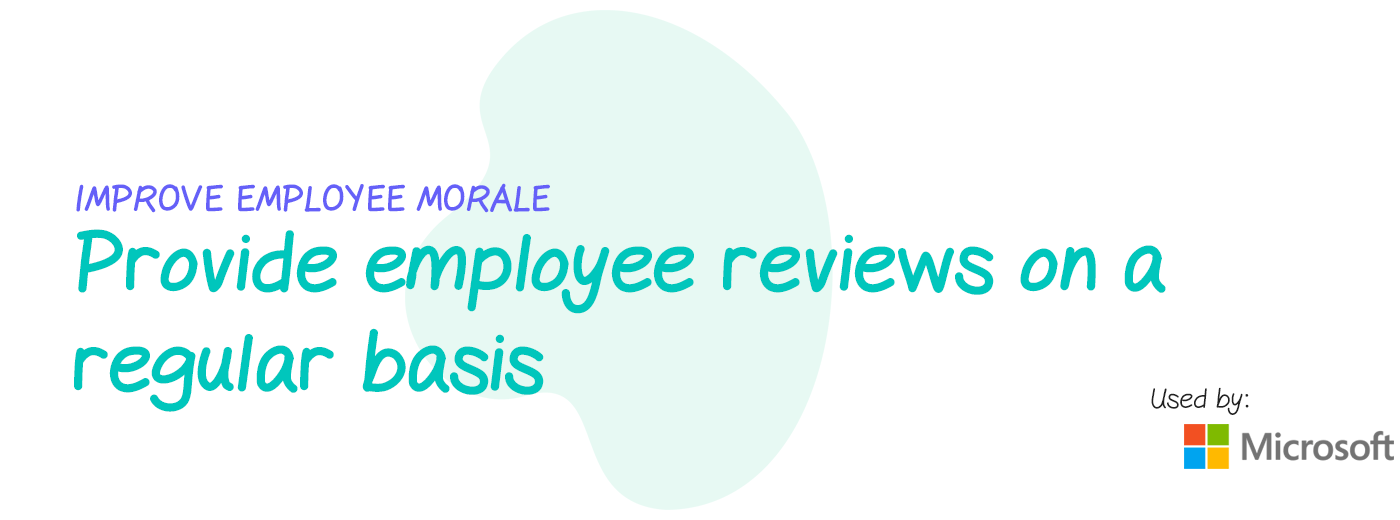
Offer employee reviews on a regular basis - not just annually
Annual performance reviews aren’t doing much for employee morale.
As far as employees are concerned, annual reviews are just an opportunity for managers to list all of the things they did wrong during the year.
And the stuff they did do well? Well, it’s often difficult for managers to recall everything that happened over the past 12 months.
But you better believe an employee clearly remembers the times they worked late or on weekends to get a project done.
Another criticism is how black and white the evaluation criteria is within some organizations. The use of grading systems or multiple managers means that context that only the direct manager would know gets lost.
As a result, employees lose faith in the results and don’t view them as an accurate reflection of their efforts.
And since these results are linked to compensation levels, bonuses, and promotions, annual reviews lead to a reduction in overall staff morale.
And here’s the thing: managers may not be a fan of annual reviews either.
In fact, some managers are fed up with the tendency of employees to suddenly ramp up performance in the month before a performance review.
It also puts managers in the uncomfortable position of “lowering” the performance scores of star employees. Some companies put limits on how many contributors can receive top marks, undermining the integrity of the entire system.
How are the top companies approaching employee reviews?
The annual “stack and rank” approach to employee reviews was taking a toll on employee morale at Microsoft.
The system relied on a 5-point system, with 1 being the highest ranking. Microsoft’s system required managers to limit the number of 1s they awarded, so star employees would wind up with a lower ranking even if their work justified a higher score.
In addition to lowering employee morale and fueling negative media stories, the system discouraged employees from collaborating with key employees, since this might lower their own assessments.
The tendency of managers to discuss rankings with fellow managers was another blow to employee morale. More outspoken managers could advocate for their top employees while quieter managers would accept lower scores for their superstars.
To change, Microsoft initiated a system of more frequent reviews between employees and managers.
With this system, employees can solicit reviews and comments from their colleagues. The system collects the responses, which are then shared with the employee’s manager and the employee.
How can you create introduce regular reviews between managers and employees?
Instead of relying exclusively on annual reviews, implement the following:
- Schedule regular check-in meetings between managers and employees either monthly or quarterly
- Keep the meetings focused on future opportunities for development and coaching
- Establish clearly defined goals so employees know what they’re being assessed on
High employee morale equals high employee engagement and low turnover
Everyone in HR knows that it’s much less expensive to keep your existing employees happy than it is to find replacements.
Plus, when employees do eventually leave for new opportunities, you want them to say fantastic things, so other talented people will want to take their place.
As a result, it’s important to invest energy into improving your employee morale. Your people - and your bottom line - will thank you.
Interested in learning how technology can help you improving employee morale and job satisfaction? Learn more about our employee engagement software.

